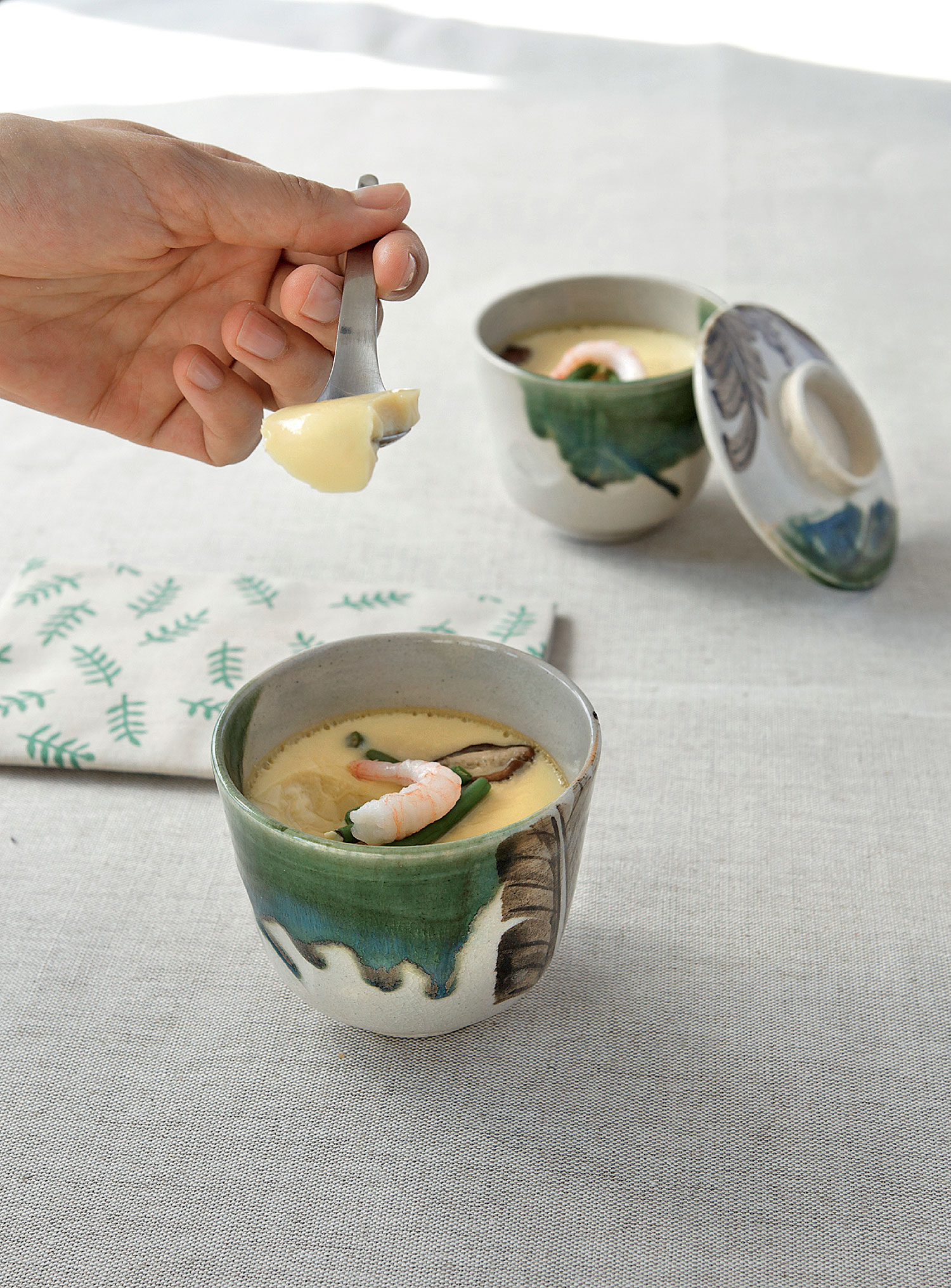Recipe for ‘Chawan Mushi’ by Laure Kié
This savoury steamed egg custard is usually eaten as a starter and can be garnished with meat, vegetables, or, as in this case, shrimp.

© ‘Le grand livre de la cuisine japonaise’, Laure Kié, Mango éditions, Patrice Hauser
To understand what hides behind the name chawan mushi, it is enough to know its literal translation: ‘steamed teacup.’ A savoury egg custard, chawan mushi is steamed in a cup equipped with its lid. Laure Kié shares the recipe for this integral dish in Japanese haute cuisine in her book Le grand livre de la cuisine japonaise (‘The Big Book of Japanese Cuisine’) that contains 170 recipes, from the traditional to the more inventive, along with step-by-step instructions to make sauces, condiments, and accompaniments for these. The chef also offers tips and advice, and identifies the best establishments for finding supplies.
Before going into the details of the recipe, Laure Kié points out that it is also possible for beginners to cook these individual egg custard dishes in a steamer and not in a bain-marie if desired. The recipe below uses shrimp as a garnish, but this can be replaced with chicken or crab.
Ingredients
3 eggs
60 g small raw shrimp, shells removed
12 sugar snap peas
400 ml dashi broth
2 tbsp mirin
1/2 tbsp soy sauce
1 tsp salt
Method
Preheat the oven to 150°C (gas mark 5).
In a salad bowl, beat the eggs with the dashi broth.
Add the soy sauce, the mirin, and the salt.
Divide the shrimp and the sugar snap peas into four ramekins—set aside a few of each for the decoration.
Pour the egg mixture over the top.
Cover the ramekins with aluminium foil and place on the oven rack. Pour two glasses of water into the drip tray placed under the grill. Cook for 20 minutes in a bain-marie.
Garnish with the shrimp and sugar snap peas that were set aside, then cook for a further five minutes.
Le grand livre de la cuisine japonaise (‘The Big Book of Japanese Cuisine’) (2015), a recipe book by Laure Kié, is published by Mango éditions (not currently available in English).
Laure Kié was born in Tokyo to a Japanese mother and a French father. It was in Japan, alongside her mother, that she discovered the basics of Japanese cuisine. After travelling across Asia to learn the secrets of its various culinary specialities and staying on traditional Japanese farms on multiple occasions, she settled in France where she shares her recipes in specialist books and on her blog.

© ‘Le grand livre de la cuisine japonaise’, Laure Kié, Mango éditions, Patrice Hauser
TRENDING
-
The Tattoos that Marked the Criminals of the Edo Period
Traditional tattoos were strong signifiers; murderers had head tattoos, while theft might result in an arm tattoo.

-
Paris, Tokyo: Robert Compagnon
With his co-chef and talented wife, Jessica Yang, Robert Compagnon opened one of the top new restaurants in Paris: Le Rigmarole.
 3:31
3:31 -
Chiharu Shiota, Red Threads of the Soul
Last year, more than 660,000 people visited the retrospective 'Chiharu Shiota: The Soul Trembles' exhibit at the Mori Art Museum.

-
‘Before Doubting Others, Doubt Yourself. Who Can Truly Say a Dish Isn’t What It Used to Be?’
In ‘A Non-Conformist’s Guide to Surviving Society’, author Satoshi Ogawa shares his strategies for navigating everyday life.

-
The Story of Sada Yacco, the Geisha who Bewitched Europe
Described by Dazed magazine as the first beauty influencer, she has been restored to her former glory since 2019.





